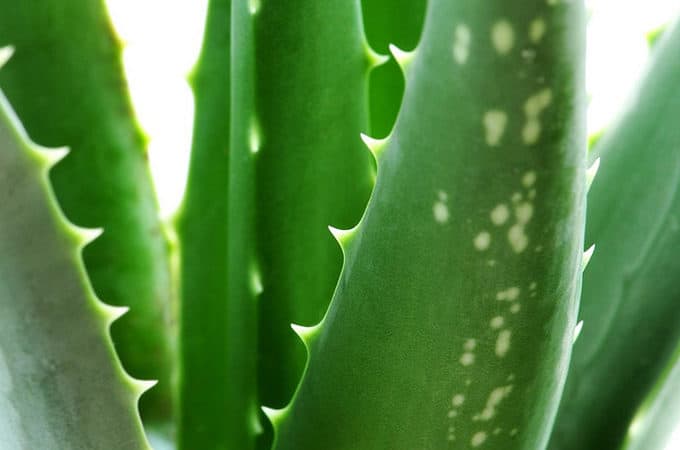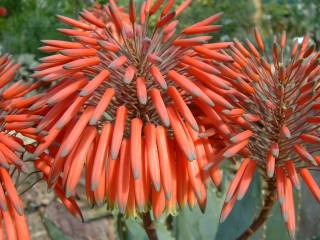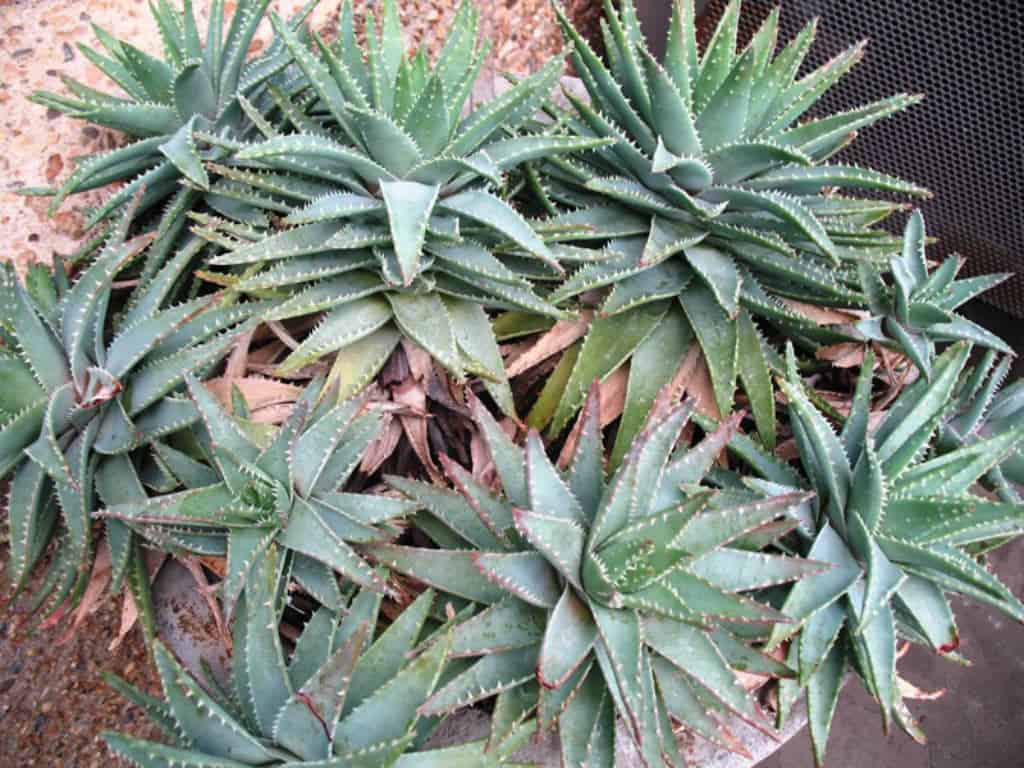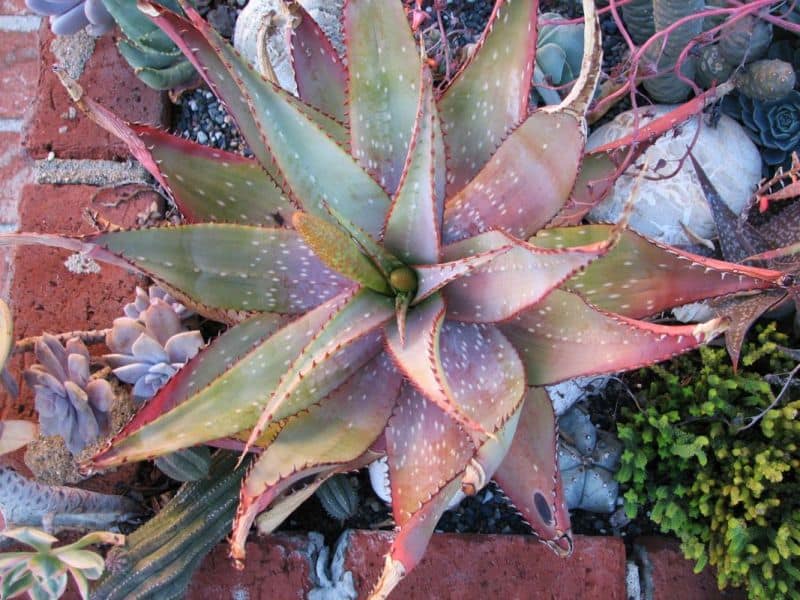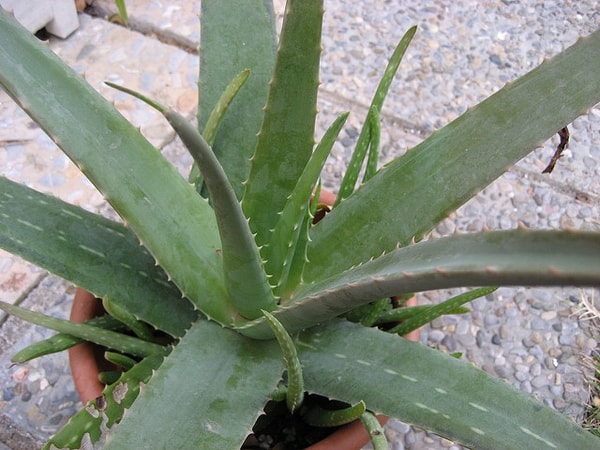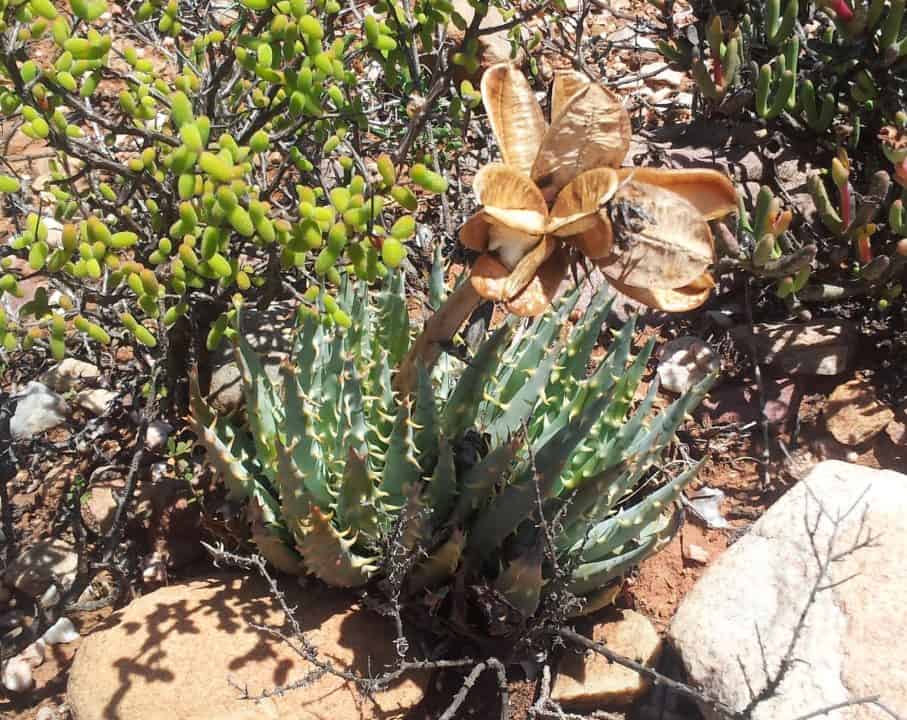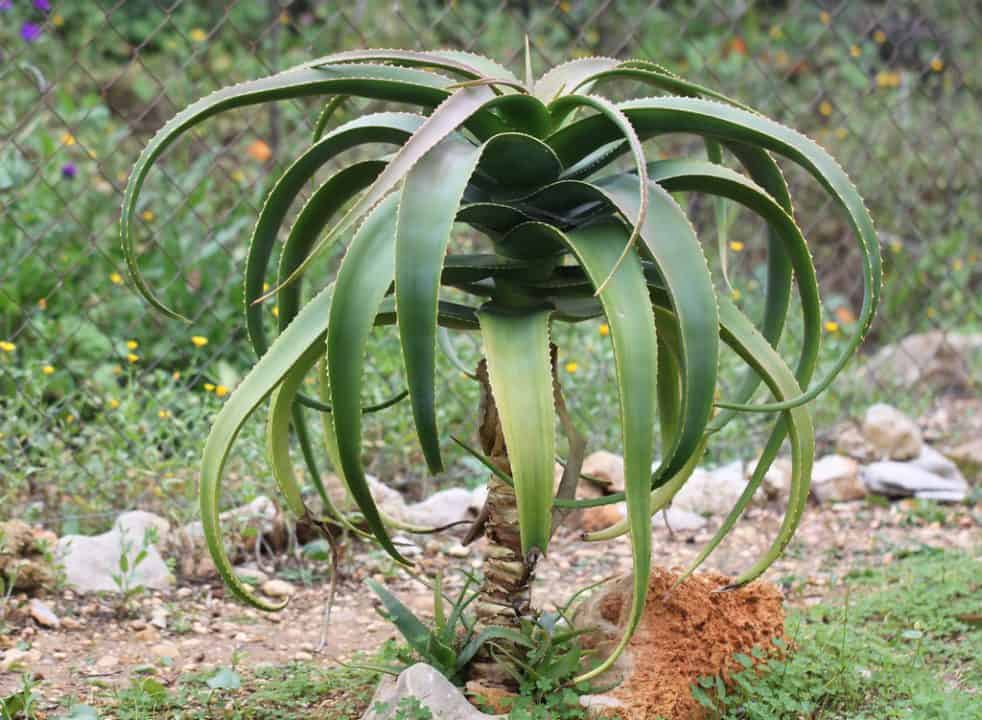Aloe ferox, also known as the bitter aloe or cape aloe, is one of the most bitter of all Aloe species due to its high concentration of anthraquinones such as emodin, aloin, rhein, and others; this characteristic has given it its common name.
The Aloe ferox plant is one of the largest species of Aloe in existence and can grow up to 7 ft tall. It comes from various regions in Southern Africa, namely Zimbabwe, Botswana, Zambia, and South Africa, but it’s mainly found in South Africa’s KwaZulu-Natal province – where it has become endangered due to overharvesting to make medicine from its leaves.
While aloe vera (Aloe barbadensis) may be the most common type of aloe, many people don’t know that there are actually over 500 species of aloe throughout the world!
Here we’ll explore bitter aloe (Aloe ferox), which you might find growing wild in your backyard or on the side of the road, and introduce you to some great ways to use it in your everyday life, like treating sunburns, insect bites, and more!
Origin and distribution
There are a number of uses for aloe vera, but did you know that there is another species with even more medicinal properties? This special variety has been used throughout South Africa and Namibia for centuries to treat everything from sunburns to diarrhea.
If you’re looking for an alternative to your go-to aloe vera plant, it might be time to add Aloe ferox (bitter aloe) to your collection.
It can grow up to 3 meters tall and produces yellow flowers on top of its green leaves in spring. Its leaves look similar to those of agave, but they have serrated edges that give them a jagged appearance. The juice inside these leaves contains anthraquinones which have powerful anti-inflammatory effects as well as diuretic activity.
Aloe ferox propagation
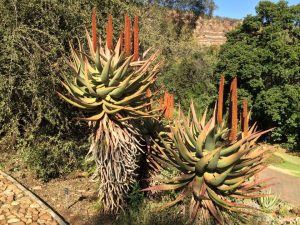
Plant propagation is more difficult with aloe ferox than it is with other aloes. Seeds of Cape aloe are extremely small and should be sown in spring, 1 cm deep, in slightly sandy soil at a temperature of 20–30°C. The difficulty of obtaining seeds has resulted in the use of tissue culture for propagation purposes.
Tissue culture can be used to produce plants that are genetically identical to their parents.
This method allows the mass production of plants that have been selected for particular characteristics such as disease resistance or ornamental value.
Tissue culture is also useful for producing large numbers of plants from rare species that would not otherwise survive in cultivation. Because of its slow growth rate, most commercial growers prefer to propagate aloe ferox by dividing mature clumps.
Plants grown from seed take several years before they flower and produce fruit; therefore, even if a gardener were able to obtain viable seeds, they would not provide any benefit until after a very long time (many years).
Aloe ferox care information
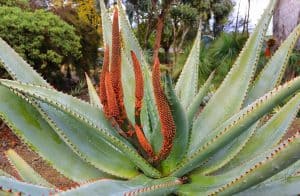
In terms of overall care, aloe ferox needs to be protected from frost and winter wetness as it is not very tolerant. Keep in a position that enjoys shade in summer but be sure to protect it from excessive drying winds.
Water freely during spring and summer, allowing the soil to dry out between waterings. Do not allow plants to sit in water and do not over-water at any time of the year. Keep pots away from hot radiators or cold air vents which could cause extremes of temperature.
Light requirement
Cape aloe ferox plant likes full sun to partial shade. Prefers full sun in warm areas, but will tolerate a little shade. Will not tolerate cold temperatures. Not frost tolerant, but can tolerate light frost for short periods of time if not injured by hard freezes.
In warm winter areas, growth can resume in late spring or early summer even if temporarily killed back by a hard freeze. Leaves may be somewhat damaged but it resprouts from roots and may flower and set seed even with extensive leaf damage if it is otherwise healthy.
Soil/potting mix
Cape aloe ferox plant generally prefers well-drained soil and will tolerate full sun, partial shade, or even deep shade. The one thing they won’t tolerate is standing water. They are drought-tolerant but do best with regular watering during their growing season. Use a potting mix designed for cacti and succulents.
Aloe ferox plants need good drainage so that their roots don’t rot. A gritty mix that drains quickly is perfect for these plants. Never use potting mixes made from peat moss; it holds too much moisture and doesn’t drain well enough.
Watering
Cape aloe plant needs a lot of water. They are not very forgiving with water, so it is best to give them an inch more than what they would normally use. This can help you prevent overwatering these plants, as they typically rot at their roots if kept wet for too long.
If in doubt, do not water these plants during the hot summer months when they are dormant and dry. Give them time to dry out before watering again.
Fertilizer
If your plants are in containers, and you’re using synthetic fertilizer, try instead to use a combination of seaweed and fish emulsion. Both natural substances release nutrients slowly into the soil as they break down, which means you don’t have to worry about over or under-fertilizing your aloe.
To keep your cape aloe plant healthy between waterings, give it a monthly feeding of diluted seaweed solution (1 tsp. liquid seaweed + 1 gal. water). You can also sprinkle a little granular seaweed on top of dry potting soil before adding new plants, the microorganisms in seaweed feed off dead organic matter like leaves and roots, so they help naturally fertilize your soil.
Seaweed also contains compounds that prevent fungi from growing on plant roots.
Temperature
The bitter aloe is particularly hardy, and can tolerate temperatures down to −7°C or below. To encourage it to flower, grow it in a semi-shaded spot and let it freeze during winter. This plant may lose its lower leaves and stems if kept too warm during dormancy, however.
Be careful not to over-water; keep the soil dry until new growth begins in early spring. The most important element for proper growth is well-drained soil with plenty of compost mixed in.
Humidity
One of many factors contributing to an aloe’s bitter taste is humidity. Unlike most plants, aloes dislike high humidity and prefer low levels for optimal growth.
If a plant has a high level of water in its leaves, it is usually considered to be very bitter tasting because it translates into bitterness in your mouth when you ingest it or apply it topically. Humidity plays an important role in both growing and preparing aloes to ensure they are not too bitter.
The ideal humidity range for ferox aloe is between 30-50% for aloes, with a maximum of 60%. If your plant has leaves that are too wet, you can gently squeeze them to remove excess water. If your plant’s leaves are dry and brittle, you may want to consider increasing humidity levels by misting or placing your plant near a humidifier.
Pruning bitter aloe
The bitter aloe is a tough plant and, as such, does not require much in terms of pruning. The best time to prune it is during its dormancy period, from October through March.
During its active growth periods, you can cut off dead or damaged leaves with no detrimental effect on your plant. If you are looking to reshape your plant, do so only when it’s dormant.
Be careful when handling any part of a bitter aloe—its sap contains anthraquinones that can cause skin irritation and may be toxic if ingested. It’s also important to note that some people have allergic reactions to bitter aloe, even when applied topically. To reduce these risks, wear gloves while working with your plant and avoid getting sap into open wounds.
When to repot
Repot your bitter aloe in spring or early summer. Use a pot that is only slightly larger than its current pot, because aloes grow best when they are planted deeply. A generic, medium-sized terra-cotta pot works well.
Be sure to wash out any old soil from its current container before repotting your ferox aloe into it again. If you plan on reusing your container, be sure to sterilize it by baking it in an oven for 30 minutes at 250 degrees Fahrenheit beforehand.
Dormancy
As an aloe, bitter aloe is considered a succulent plant. It requires dormancy during its growth cycle and does not grow year-round like some other plants. In fact, although it has been around for several years, many people do not know that bitter aloe is even an aloe at all!
As a succulent plant, it’s in dormancy during the winter months and grows rapidly when temperatures begin to rise in summer. During dormancy, it will appear as if there are no leaves on your plant; however, you can expect new leaves to appear after about six weeks of warm weather.
Flowers and fragrance
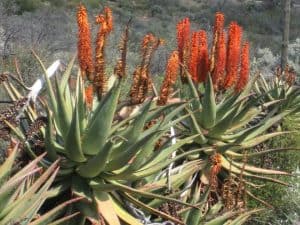
The Cape aloe produces small, bright yellow to orange flowers that emit a bitter fragrance. The flowers are popular with beekeepers for their natural sugar content, which increases their pollination potential.
However, some aloes are considered poisonous to humans and animals and should be planted far from food-producing plants.
Growth rate
Aloe ferox is a relatively fast-growing succulent, reaching heights of up to 50 centimeters within two years of germination. Its rate of growth slows down in warmer temperatures and with full sun exposure. To prevent overheating, plant your bitter aloe in a partially shaded location.
Toxicity
Aloe ferox has not been reported to have any adverse effects on humans or animals when taken orally in small amounts. However, internal consumption of large amounts may cause severe irritation and stomach upset.
External use is also considered safe; however, there are no specific studies confirming its safety. It is, therefore, best to test a small area first before using it extensively on large areas of skin.
USDA Hardiness Zones
Aloe ferox thrives in USDA hardiness zones 10-11. It can be grown as an indoor plant in other zones.
Pests and diseases
As a succulent, aloe ferox is sensitive to fungal rot and mildew. If your plant looks like it’s turning yellow and dying at its base, then most likely it has root rot.
It’s not as common, but stink bugs have also been known to attack aloe ferox they suck out all of their sap, causing them to wither away and die. If you see any signs of pests or disease on your aloe ferox plants, remove them immediately!
Cape aloe benefits
The bitter aloe (cape aloe) is a common herb in Chinese medicine. Most of its medicinal benefits are attributed to a substance called anthraquinone, which has antibacterial and anti-inflammatory properties.
While there are many, many different species of aloe in South Africa, only a few are commonly cultivated for medicinal use. One of these is called Aloe ferox or the bitter aloe. It can grow up to 1 meter tall and has long, narrow leaves covered with fine hair.
The flowers are yellow to orange and usually appear during late spring. The roots contain compounds that have antibacterial, anti-inflammatory, and anti-viral properties which makes them an excellent ingredient for topical medicines.
Although Aloe ferox can be cultivated and harvested from wild plants, it is also commercially cultivated in several countries including Egypt, Brazil, and South Africa. At the end of an extended growing season, excess plant matter may be collected for use as fertilizer for crops or for storage for later use in fields or gardens.
